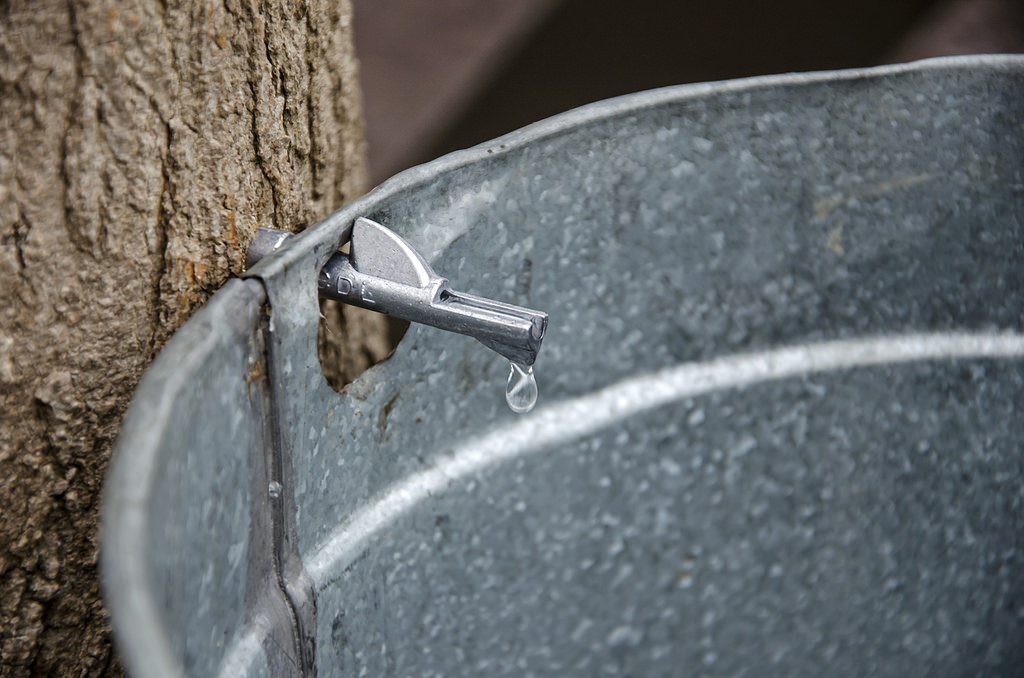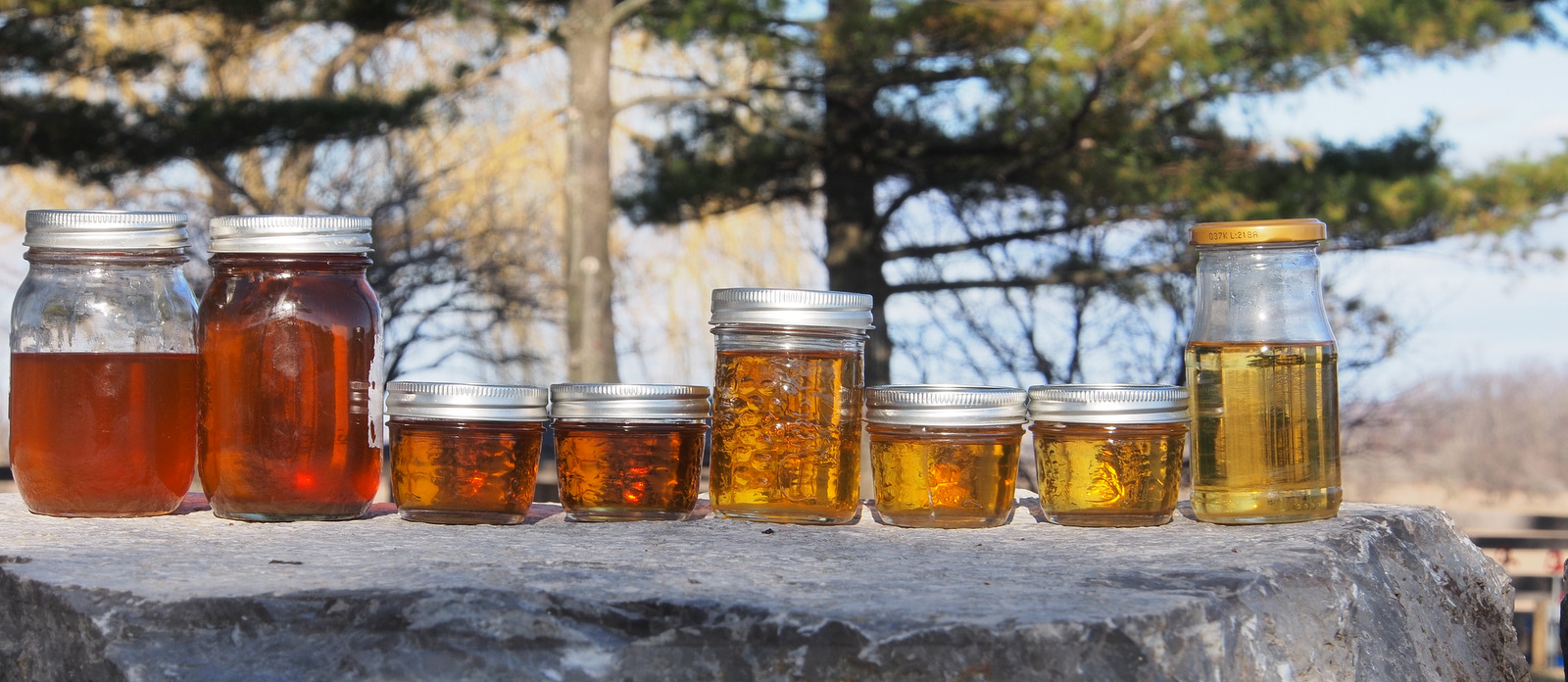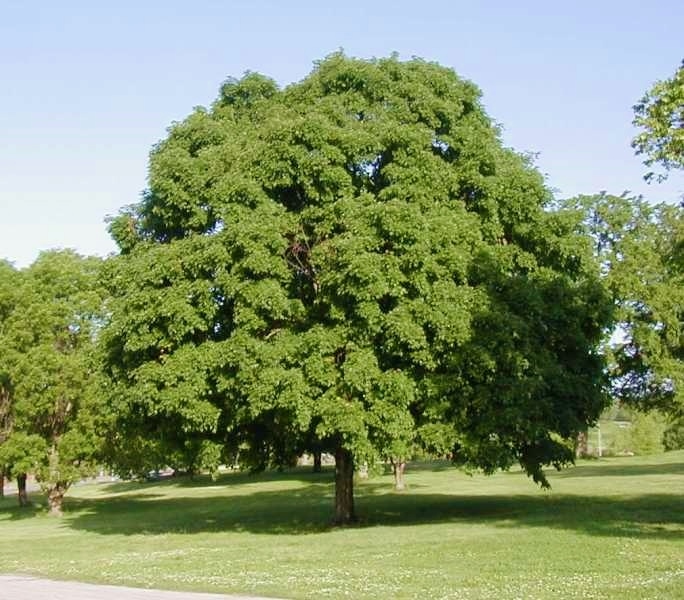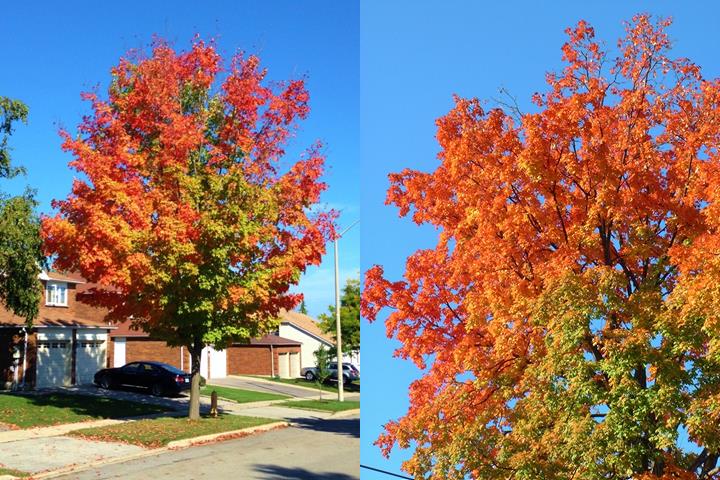For centuries, people have been tapping sugar maple trees for their sweet, sugar-rich sap. One legend describes piercing the bark of a maple tree to use its “sweet water” to cook venison. Others called the tapping period in the spring “sugar month” or “maple moon,” which is a tradition that has continued to survive amongst communities in the deciduous forests of North America. It has also been noted that when the French settlers first arrived to North America, they were taught how to tap sugar maple trees and boil the sap to turn it into the tasty treat we all know and love today. The sugar maple was named appropriately Acer saccharum- Acer because the sugar maple is a part of the maple Genus and saccharum which means sugary!

These historical maple syrup traditions have led to the development of more than 8,600 maple syrup businesses in Canada today, which produce about 71% of the world’s pure maple syrup. The sap is collected in the spring by tapping the wood of a mature sugar maple tree. All maple tree species can be tapped, but the sap of the sugar maple contains twice the concentration of sugar which is why we use sugar maples for commercial syrup production. The sap is then boiled down to make syrups, candies and maple sugar. Did you know that you would have to collect 40 litres of sap from a sugar maple in order to make only 1 litre of maple syrup?

While the sugar maple is commonly planted for its ability to produce delicious syrup, it is also the perfect tree to create shade and privacy on residential properties. With its dense, rounded crown and spreading branches, this tree can reach an average mature height of about 45 feet and average mature width of about 30 feet in urban areas. The young bark of sugar maples is a smooth, light grey-brown colour that matures into a darker grey colour with deep furrows and irregular edges.

Small, yellow-green clusters of hanging flowers appear in early spring before or with the leaves which make way for the small, green to brown clusters of two-winged, horseshoe-shaped maple keys that mature in the fall. The seeds enclosed in the maple keys are produced every year, with a more abundant crop usually appearing about every seven years.

My favourite physical feature of the sugar maple is the leaf, which is Canada’s national symbol and the source of inspiration for our Canadian flag! This iconic leaf is dark green in colour with five distinct lobes and smooth edges. In the fall, the leaves turn an unbelievable colour which includes a vibrant gradient of reds, oranges, yellows, and greens. In Toronto, this fall colour is best seen while driving along the Don Valley Parkway in late September and October.

If you are looking to plant a brilliant autumn tree, the sugar maple might be the right tree for you!! Check out our website to set up a consultation with one of our arborists this fall!
Brenna Anstett is an ISA certified arborist and LEAF’s Field Operations Coordinator.
The Backyard Tree Planting Program is supported by The Regional Municipality of York, the City of Markham, the Town of Newmarket, the City of Toronto, Toronto Hydro, and the Town of Ajax.
